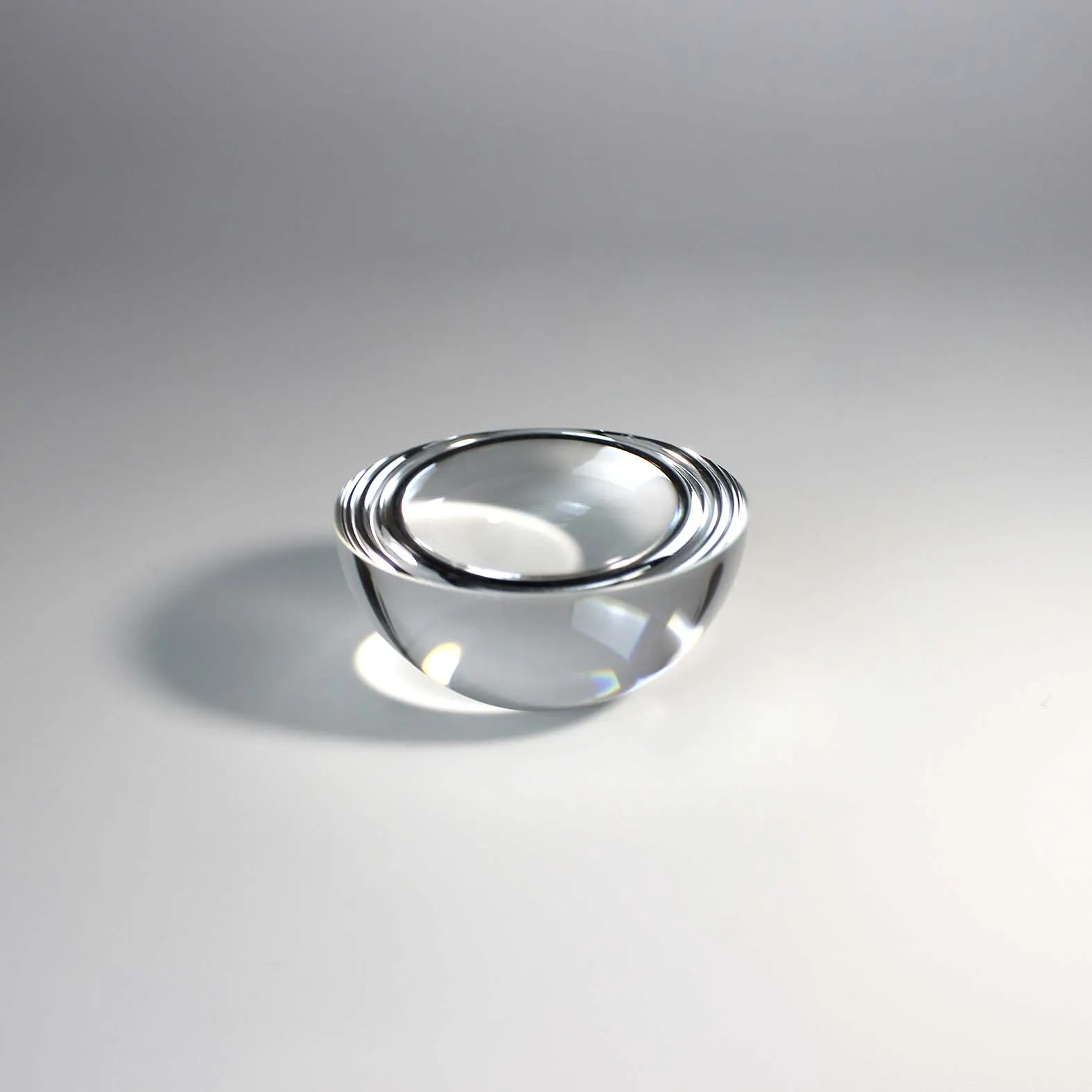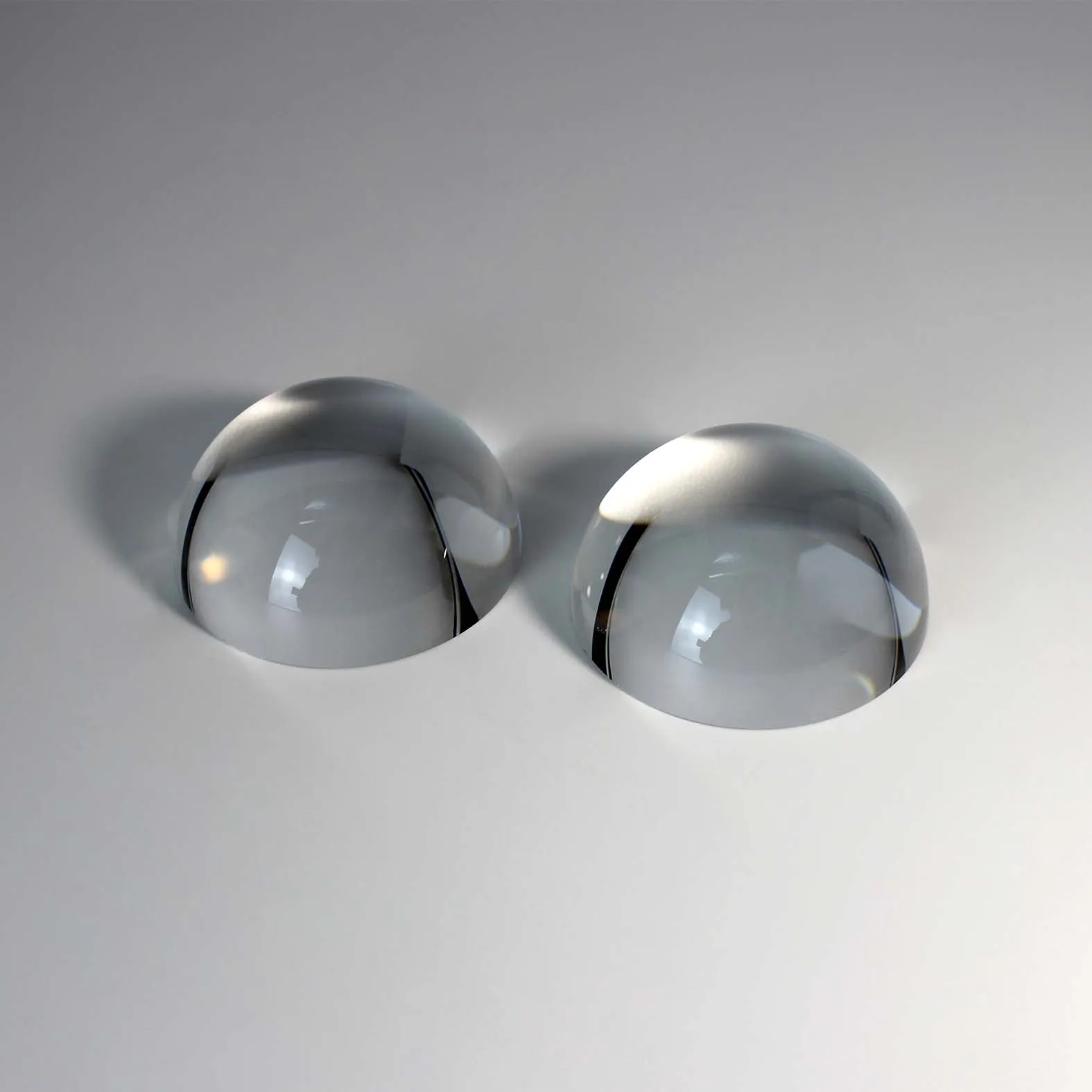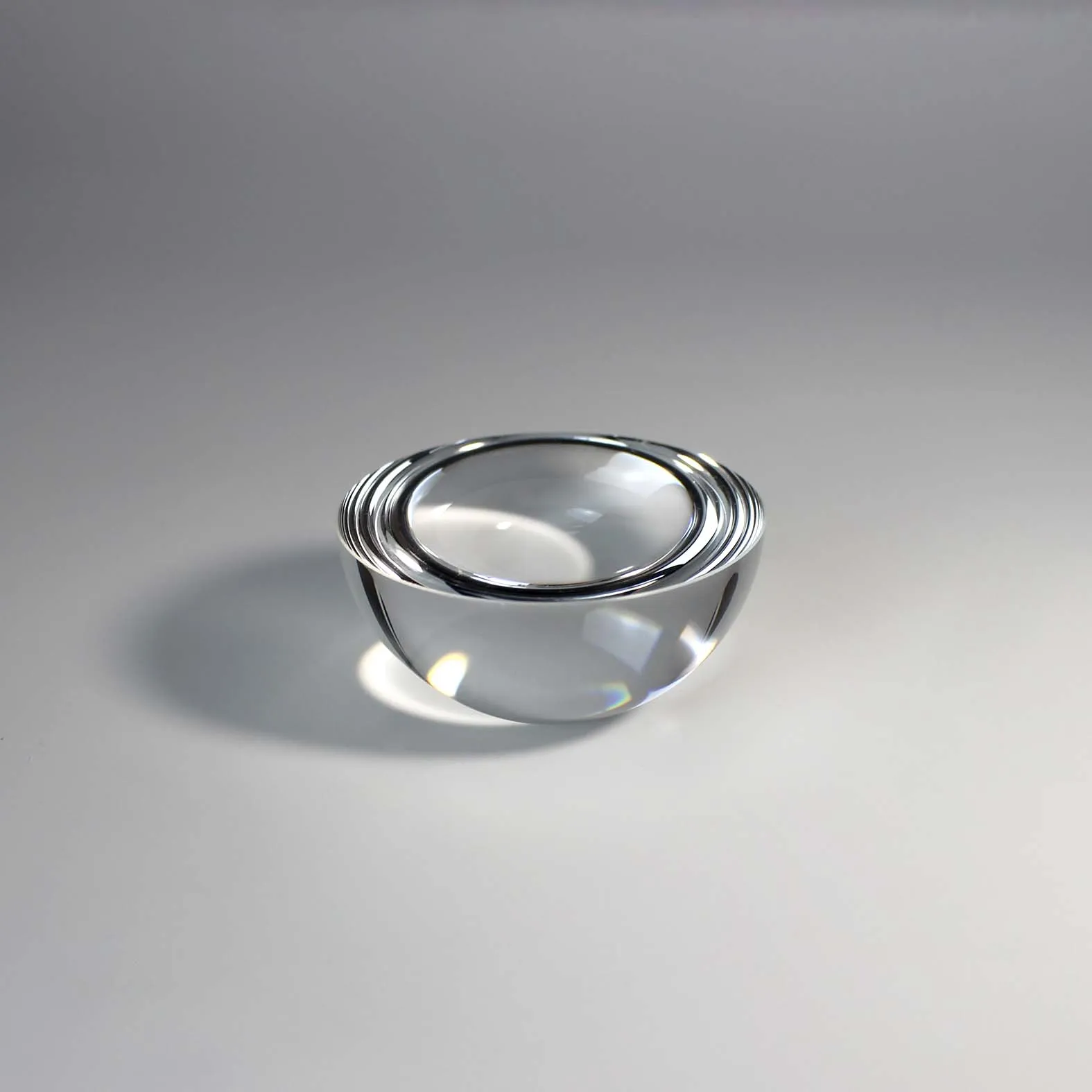Optical Hemisphere Lenses D 50mm BK7 Half Ball Lens
Diameter: 0.50mm-150mm
Tolerance: 0.001-0.003
Sphericity: 0.001
Surface Quality: 20-10 or better
Coating: Optional
Half-Ball lenses are a kind of convex lenses in hemispherical shape that made of optical glass with good transparency and refractive parameters. It is usually made by cutting Ball Lenses in half.
Comparing to ball lenses, they are more compact and easier to mount.
Application of glass half ball lens
Optical glass half ball lenses are as beam collimator for optical fibers, emitters and detectors. Other applications include endoscope, bar-code scanning and laser measurement etc..
Main Specifications of Half ball lenses
Material: BK7, B270, Borosillicate glass, UV Fused Silica or any other glass crystal material, plastic and SI, Ge and other infrared material are also available
- Tolerance on half Ball Lens Diameter: +/- 0.001mm
- Toleranace on half ball lens Thickness: +/- 0.01mm
- Half Ball Lens Roundness: < 0.001mm
- Surface Quality of Half Ball lens: 20/10 scratch and dig or better
- Half Ball Lens Cleaning: Class 100 clean room
- Half Ball Lens Packing: in Waffle plastic trays
- Each Half Ball Lens is checked: 100% under microscope before Delivery.
- All Half Ball Lenses are cleaned and packed: in Class 100 clean room area.
Pictures of Transparent Glass Half Ball Lens
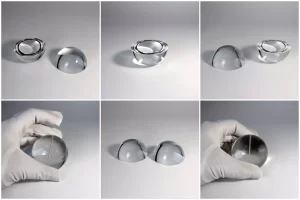
Specifications of BK7 Half Ball Lens
|
Specificaitons |
Data |
|
Material |
BK7 |
|
Diameter |
50mm |
|
Tolerance |
±0.1mm |
Drawing of Half ball lens and ball lens
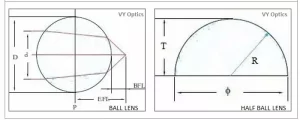
People also ask
- What is the effective focal length of a ball lens?
The effective focal length is equal to the index of refraction (denoted here by n) times the diameter of the ball lens (D), divided by 4(n-1). We can write this as EFL = [n D]/[4(n-1)]. The back focal length equals the effective focal length – D/2.
- What magnification does a ball lens have?
Ball lenses are highly transparent spheres made with optical glass. Some of the earliest microscope lenses — developed by Antoni van Leeuwenhoek — relied on surface tension to form small spheres from melted glass. These lenses achieved magnifications as large as 275x and were as small as 1.5 mm in diameter.
- What is a half ball lens?
Ball lenses are completely spherical lenses most commonly used to couple light in and out of fibers. Half-ball lenses are hemispheres. We supply high precision grade-3 ball lenses, midrange grade-25 ball lenses and commercial grade-100 ball lenses offering all grades to suit any application.






Our Ordering Process
Send us your request with detailed specifications
Receive a commercial offer with terms and costs
After your approval, we handle manufacturing, quality control, and shipping
📦 Shipping
3-5 days in EU, from 10 days to USA
💳 Payment methods
Cash, Bank Transfer, Cards (Visa, Mastercard, Amex, Discover) and PayPal
💬 Questions?
Contact us via WhatsApp, phone, live chat or email
